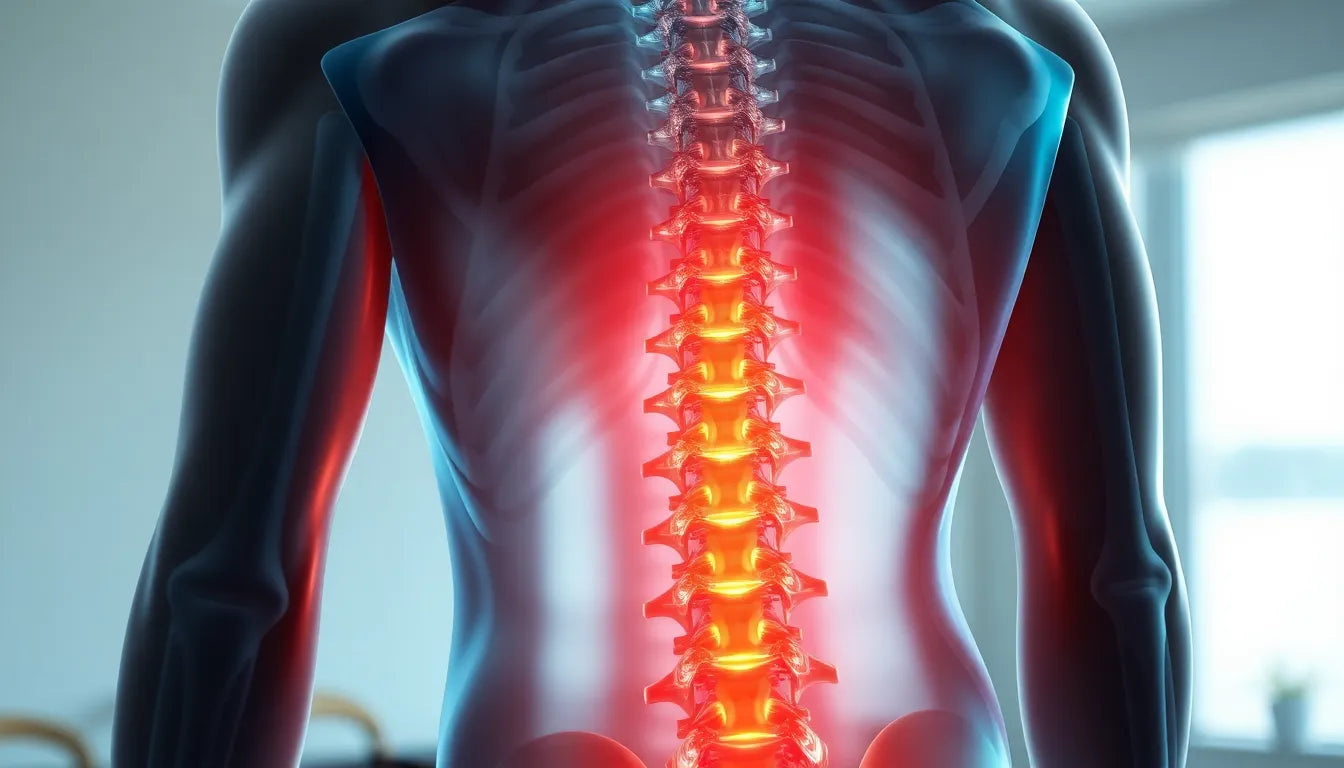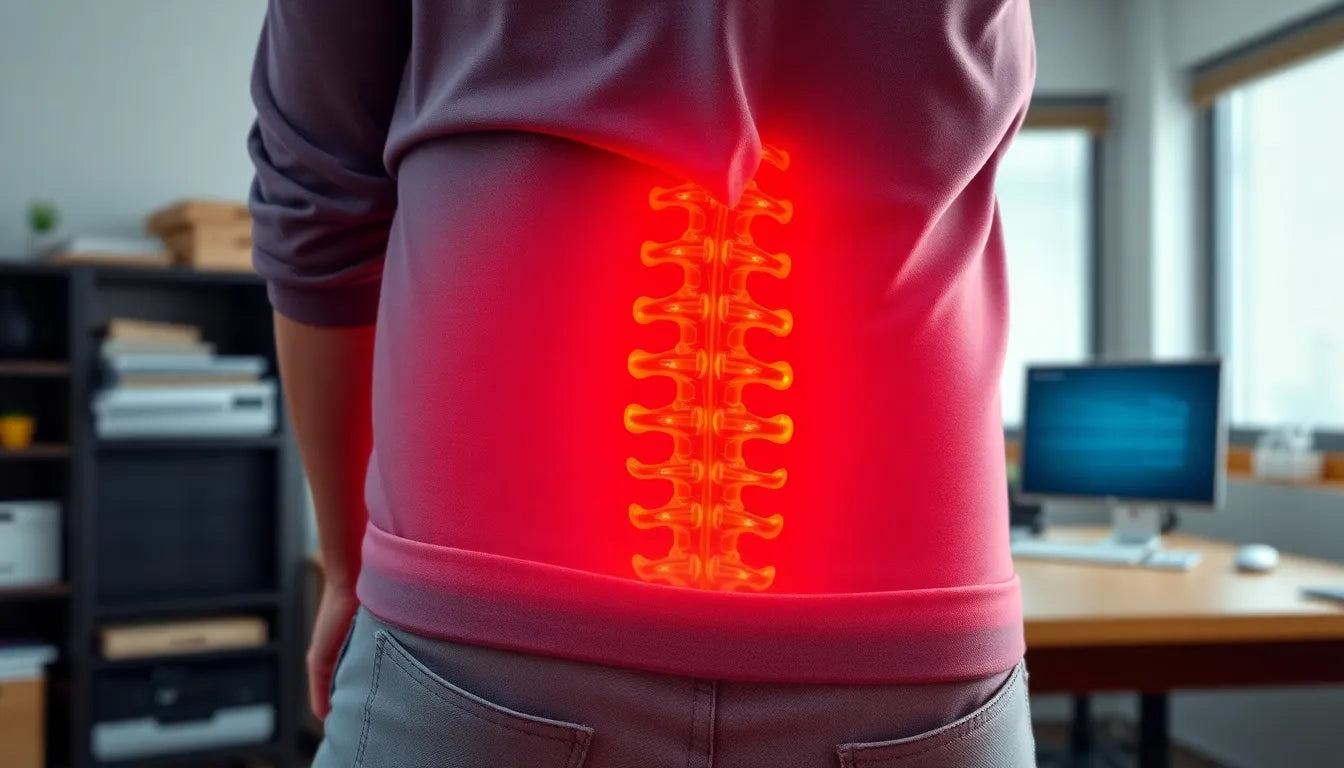Understanding how long it takes for a herniated disc to heal is crucial for anyone experiencing this common spinal issue. A herniated disc occurs when the soft, gel-like center of a spinal disc pushes through a tear in the tougher exterior casing. This displacement can irritate nearby nerves, leading to pain, numbness, or weakness, particularly in the back, legs, or arms. The discomfort and mobility issues associated with this condition can significantly impact daily life, making effective management and recovery a priority.
the healing journey: what to expect
Embarking on the healing journey from a herniated disc involves understanding that recovery is a gradual process influenced by a variety of factors. While some individuals may experience relief from symptoms within a few weeks, others might find that the path to recovery is more extended. The journey often includes a combination of pain management, physical therapy, and lifestyle adjustments to support healing and prevent future issues. It's important to recognize that each person's experience is unique, and timelines can vary significantly based on individual circumstances.
importance of patience and persistence
Patience and persistence are key when dealing with a herniated disc. The healing process requires a proactive approach to managing symptoms and facilitating recovery. This might involve adhering to a prescribed treatment plan, engaging in regular physical therapy exercises, and making necessary lifestyle changes to support spinal health. It's essential to maintain a positive outlook and remain committed to the recovery process, even when progress seems slow. By staying informed and actively participating in your treatment, you can help ensure a smoother path to relief and a return to normal activities.
Understanding the nature of a herniated disc and the factors that influence healing can empower you to take control of your recovery journey. As you navigate this process, remember that while the road to healing may be long, the destination is well worth the effort. Stay tuned for more in-depth information on recovery timelines and factors affecting healing in the next section of our blog post.
timeline of recovery for a herniated disc
The journey to recovery from a herniated disc is often marked by several stages, each characterized by distinct symptoms and healing milestones. Understanding these can help set realistic expectations and guide you in managing the condition effectively.
short-term recovery: pain reduction phase
For many individuals, the initial phase of recovery involves a reduction in pain, typically occurring within 2-8 weeks. During this time, inflammation begins to subside, and the body starts to adapt to the changes in the spine. Pain management strategies, including medications and physical therapy, play a crucial role in alleviating discomfort and facilitating this early recovery stage.
complete healing: a broader timeframe
While initial pain relief might occur relatively quickly, complete healing of a herniated disc can take significantly longer, ranging from 5 to 22 months, with an average of around 13 months. This extended period encompasses the gradual repair and stabilization of the affected disc, requiring ongoing management and lifestyle adjustments to support long-term recovery.
stage-based recovery: understanding the phases
The healing process can be broken down into several key stages:
- Acute Inflammation Stage (1-2 days to 2 weeks): This phase is marked by the most intense pain and inflammation as the body responds to the disc injury.
- Gradual Improvement (2-6 weeks): As inflammation decreases, symptoms begin to improve, and mobility may start to return.
- Plateau and Stabilization (6-12 weeks): During this phase, symptoms may stabilize, and patients often notice a plateau in their recovery progress.
- Long-term Management (Beyond 12 weeks): Emphasizing the importance of ongoing management and lifestyle adjustments, this stage focuses on preventing recurrence and maintaining spinal health.
factors influencing healing time
The time it takes for a herniated disc to heal can vary widely among individuals, influenced by several factors:
severity of herniation
More severe cases of herniation often require longer recovery periods. The extent of disc displacement and nerve involvement can significantly impact the healing timeline, necessitating more intensive treatment and management strategies.
overall health and age
General health and age play crucial roles in the healing process. Older individuals may experience slower recovery due to age-related changes in tissue repair and regeneration. Additionally, underlying health conditions can affect the body's ability to heal efficiently.
activity level
Maintaining a balanced level of activity is essential for recovery. Both excessive physical activity and a sedentary lifestyle can hinder the healing process. Engaging in appropriate exercises and avoiding activities that strain the back are vital components of a successful recovery plan.
treatment compliance
Adhering to prescribed rehabilitation exercises and physical therapy protocols is critical for optimal recovery. Consistency in following treatment plans can improve outcomes and reduce the risk of complications or prolonged symptoms.
In conclusion, the timeline for healing a herniated disc is influenced by multiple factors, including the severity of the condition, individual health, and adherence to treatment. By understanding these elements and actively participating in the recovery process, individuals can enhance their chances of achieving a successful outcome. In the next section, we will delve deeper into the biological process of disc healing and address common questions related to recovery.
understanding the biological healing process of a herniated disc
Healing a herniated disc involves a complex biological process that includes several key stages. Initially, the body's inflammatory response works to remove damaged tissue and debris from the site of injury. This inflammation, while painful, is a crucial step in the healing journey. Over time, the inflammation subsides, allowing for tissue repair and remodeling to occur. During this phase, the body begins to form scar tissue to stabilize the affected area, gradually restoring function and reducing pain.
It's essential to balance hope with realism when considering recovery from a herniated disc. While many individuals experience significant pain reduction within the first few months, complete healing may take longer. Understanding that pain reduction and complete healing are distinct processes can help set realistic expectations. Symptoms often improve before the disc is fully healed, which means ongoing management and care are vital even after initial relief is achieved.
balancing hope and realism in recovery
While the journey to healing a herniated disc can be challenging, it is important to maintain a hopeful outlook. Many people recover successfully with conservative treatments, such as physical therapy and lifestyle adjustments. However, it's equally important to approach recovery with a realistic mindset. Not all cases follow the same timeline, and some individuals may require additional interventions, such as injections or surgery, particularly if conservative measures are insufficient.
By understanding the biological process of healing and the factors that influence recovery, individuals can better navigate their journey to relief. Staying informed, adhering to treatment plans, and maintaining open communication with healthcare providers are crucial steps in managing expectations and achieving the best possible outcome.
frequently asked questions
How long does it take for a herniated disc to heal completely?
Healing times vary, with complete healing ranging from 5-22 months, averaging around 13 months. The timeline depends on factors such as the severity of the herniation, individual health, and adherence to treatment.
Can I speed up the recovery process?
While you can't speed up the biological process, you can support recovery by following treatment plans, maintaining a healthy lifestyle, and avoiding activities that exacerbate symptoms. Consistent adherence to physical therapy and rehabilitation exercises can also aid in recovery.
Is surgery always necessary for herniated discs?
Surgery is not always necessary; many cases improve with conservative treatments like physical therapy, rest, and medication. Surgery is typically considered when conservative treatments fail to provide relief or if there are significant neurological deficits.
What activities should I avoid during recovery?
Avoid heavy lifting, high-impact sports, and activities that strain the back until cleared by a healthcare professional. It's essential to gradually reintroduce activities under the guidance of a healthcare provider to prevent further injury.
How can I manage pain during recovery?
Pain can often be managed with a combination of physical therapy, medications, hot/cold therapy, and gentle exercises, as advised by a healthcare provider. It's important to communicate with your healthcare team to find the most effective pain management strategies for your situation.
Sources
- "Duration of Symptoms Resulting from Lumbar Disc Herniation." PMC.
- "How Long Does a Herniated Disc Take to Heal?" ADR Spine.
- "Discovering Hope: Can a Herniated Disc Heal After 2 Years?" More Good Days.
- "Herniated Disc Healing: Timeline and Signs of Improvement." Health Central.
- "Herniated Disc Recovery Time...How Long Does it Take?" Crush Back Pain.
- "Signs a Herniated Disc is Healing: Timeline & Recovery." Spine MD.
- "Do Bulging Discs Heal?" ASAP Pain Docs.


















